How to care for a motorcycle?
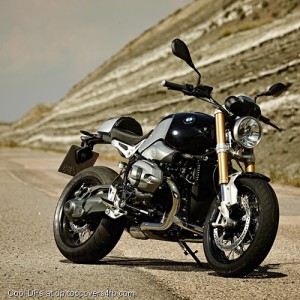
Proper, constant care of the equipment is the key to its long service. Not all motorcycle owners think that taking care of their bike is necessary from the first days of purchase. Some do not know how to care for a motorcycle and operate it correctly, so that it does not fail at the most inopportune moment.
to contents ↑General rules
First of all, after acquiring the equipment, be sure to read the instructions and familiarize yourself with the requirements that the manufacturer makes for consumables.
Immediately check the performance of all systems, regardless of whether you have a new bike or a used one. If the first symptoms of a malfunction are identified, correct it immediately. It will be cheaper than repairs. Timely repair of minor faults - saving on overhaul.
to contents ↑Motorcycle care
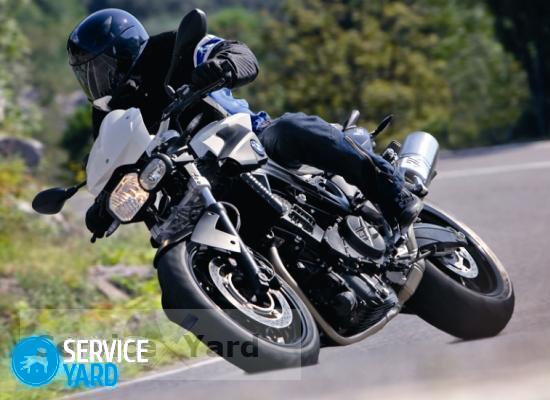 Proper operation of the bike includes:
Proper operation of the bike includes:
- Outdoor care.
- Checking grease and oil.
- Gas station.
- Regulation of individual elements.
- Service, which is divided into:
- Daily.
- The first is technical.
- Periodic technical.
Daily maintenance is required before each departure. To do this, check:
- Fuel level in the system.
- Tire pressure.
- The brakes.
- Lighting.
to contents ↑On a note! Perform periodic maintenance several times a season or at a certain mileage - it depends on the particular motorcycle model.
Outdoor motorcycle care
To maintain the perfect look of your motorcycle for a long time, follow these guidelines:
- Wash your motorcycle immediately after riding. After rain, be sure to clean it of adhering dirt, as dried mud, even in a perfectly dry garage, condenses moisture and corrodes iron.
- When cleaning the bike, do not scrape off the dirt or wipe it with a dry cloth, as you may spoil the paintwork. Soak the resulting lumps of dirt, and then remove with a soft cloth.
- When cleaning, pay particular attention to the wiring of the motorcycle.
- Soak dry dust that has settled on the bike, and then rinse with a sponge with car shampoo or a stream of water.
- Wipe the aggregates from time to time with a brush dipped in kerosene to remove oil deposits. After cleaning, wipe the components and parts of the motorcycle with a dry cloth.
- Clean opaque chrome parts with detergents for cleaning chrome plumbing fixtures or use soda. After cleaning, wash the parts with water and rub them with a soft cloth.
- To protect the chrome coating from moisture, use technical petroleum jelly - it will help to properly care for the motorcycle and prevent metal corrosion and the appearance of external defects.
to contents ↑On a note! From time to time, use auto cosmetics, silicone spray for rubber parts, and polishing paste.
Engine care
To properly care for a motorcycle, it is very important to constantly monitor the state of the main working element of the system - the engine. Maintenance of the engine involves the selection of gasoline and oil in accordance with the requirements of the manufacturer.
Choose a brand
The choice of oil recommended by the manufacturer will allow you to delay the moment of repair of your engine. The performance of a motorcycle also depends on oil.
On a note! Of all the tested oils, the most acceptable in terms of price / quality ratio is API SF 15W50 or 20W50 mineral oil. This type of mineral oil provides excellent engine performance in temperatures ranging from -5 to +40 C, and, very importantly, it does not fade.
The correct time frame
Carefully observe the oil change dates. It is recommended to change the filter during oil change once a season or every 5-6 thousand km. When changing the oil, it is necessary to rinse the crankcase with special flushing oil, pour it up to the lower mark of the measuring rod.
On a note! Check the oil level every thousand kilometers. Check with a special oil dipstick.
Change the oil
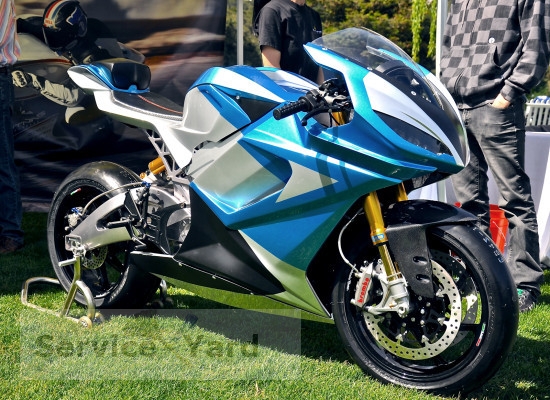 To change the oil correctly, proceed as follows:
To change the oil correctly, proceed as follows:
- Place the motorcycle on a perfectly flat surface so that there are no distortions.
- Start the engine for a couple of minutes.
- Stop the engine.
- Wait 1-2 minutes and check.
to contents ↑On a note! The oil level should be between the maximum and minimum values on the dipstick. Lack, as well as an excess of oil, lead to disruption of the engine. If the oil level is insufficient, add it in several stages - this will be the proper care of the motorcycle.
Carburetor Care
To increase the life of the carburetor, flush it every 4 thousand km. For daily care, be sure to check for fluid leaks on the carburetor. If a malfunction is found, replace the gaskets and retighten the fasteners.
Flush procedure as follows:
- Unscrew the plug.
- Remove the fuel filter.
- Wash the fuel filter in clean kerosene or replace if necessary.
- Blow out the nozzle flushing holes with compressed air.
to contents ↑On a note! Do not use metal objects in the form of steel wire to clean the channels, as they can change the structure of the hole. Then all your motorcycle care activities will be in vain.
Brake Care
During prolonged use of the bike, dirt, dust, and also oil residues accumulate on the brake system. All this poses a threat to the safety of the driver. Therefore, once a year, the brake system must be thoroughly cleaned. In addition, you should not forget to maintain a constant level of brake fluid in the system. The level must be checked in the window of the expansion tank.
On a note! Change the brake fluid once a season.
Device and possible problems
The brake system must be checked immediately after buying the bike and before the start of the operating season. The main element of the brake system is the disc. The most common problem is brake disc wear.
On a note! The maximum wear is 3 mm.
It is necessary to measure the level of wear with a caliper (the center of the disk is measured):
- Ideally, the disc should be smooth and free of longitudinal waves.
- Otherwise, the brake pads will wear off very quickly.
Change pads
The pads themselves are consumables. Make sure that the minimum thickness of the friction layer of the pads is at least 0.8 mm, otherwise the metal base of the pads will begin to wear out.
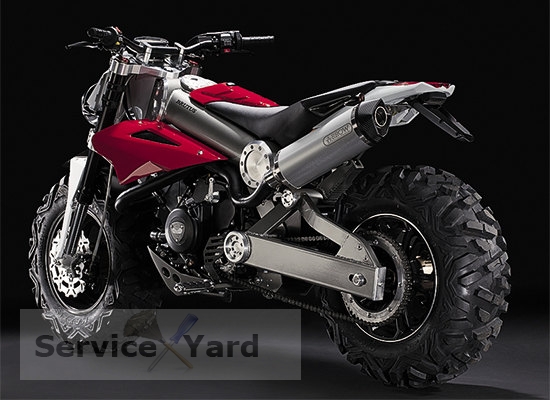 The process of replacing pads is quite simple:
The process of replacing pads is quite simple:
- Remove the bolt from the side.
- Lift up a support.
On a note! Replace the pads carefully, do not confuse the left with the right.
Take care of the hoses
In addition to the brake disc, the hose also enters the brake system. It is necessary to carefully monitor its condition so that it is not stretched and worn out.
to contents ↑On a note! The condition of the brake hose is checked by depressing the brakes: if the pedal goes deep, the hose must be replaced.
Motorcycle Chain Care
One of the important parts of a motorcycle is the chain, as it is the link between the engine and the wheel.
Stretch
Check chain tension regularly. Incorrect tension reduces the power of the bike, which is transmitted to the wheel, and also leads to rapid wear of the rear sprocket.
On a note! Correct adjustment involves the chain sagging in a calm state of 15-25 mm. Test at the bottom of the chain in the center. In the event that you can raise the chain more than 25 mm - tighten it.
Choose a lubricant
Use grease - both universal and designed for a particular model of chain. On motorcycles, these types of chains are used: Z-, O-, X-ring.
In order for the grease to successfully cover all the elements, it must be sufficiently fluid and, at the same time, must withstand heavy loads. Make sure that the grease contains water-repellent elements. With proper care, the chain lasts approximately 2 years. When replacing it, the sprocket must also be replaced.
On a note! If your motorcycle has a cardan drive, but not a chain drive, then every 8-10 thousand km check all anthers, connections and do not forget to change the oil in the gearbox.
Chain cleaning
From time to time it is recommended to clean the chain with a special spray, and after cleaning apply grease. Special products can be purchased at bicycle and motorcycle stores. Lubrication is necessary every 500-600 km.
On a note! In case of severe contamination of the chain and in the absence of a spray for cleaning at hand, you can wash it with a soft brush with soap, but in no case with gasoline., As this can damage the seals.
Lubricate as follows:
- Pre-hang the rear wheel using the center footrest.
- Lubricate the inside of the chain.
- When the wheel rotates, the grease should be evenly distributed over the entire surface.
- After the end of the lubrication process, let the motorcycle stand for 10-20 minutes.
to contents ↑On a note! We recommend lubricating the hot chain for greater efficiency.
Wiring Care
It depends on the quality of the electrical wiring whether the motorcycle will ride or not, so it is very important to monitor the condition of this system. Caring for a bike's electrical equipment involves the following:
- If there is a battery, periodically check the electrolyte level in the cells and determine its density.
- The battery in the bike must always be charged.
- Inspect the wires periodically and if breaks or damage are found, replace them.
- The spark plug wire also needs to be checked periodically: if cracks are found, replace it.
- Before each departure, check the headlights and dimensions.
- Check the contacts for oxidation. If a problem is found, fix it immediately, as this may cause the motorcycle to not start.
- Periodically replace the candles, according to the routing.
Shock Absorber and Front Fork Maintenance
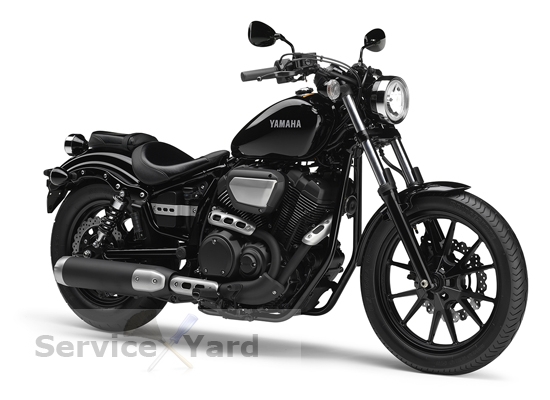 Shock absorbers are not repairable, so if you need to replace the shock absorber, then buy a new one. The shock absorber is replaced in the following cases:
Shock absorbers are not repairable, so if you need to replace the shock absorber, then buy a new one. The shock absorber is replaced in the following cases:
- If you hear knocks during movement and characteristic creaks.
- If fluid has leaked from the shock absorber.
- If there is a loss of damping properties.
On a note! To ensure that the motorcycle care is correct, check the front shock absorbers every 5 thousand kilometers, as they are very sensitive to dust. Replace the rear if fluid has leaked. Also, when replacing the shock absorber, replace the hinges.
Shock Absorber Replacement
Replace the shock absorber as follows:
- Mount the motorcycle on the center step.
- Unscrew a bolt of the top fastening.
- Unscrew a bolt of the bottom fastening.
- Remove the shock absorber.
On a note! Install the shock absorber in the reverse order.
The front fork shock absorbers as well as the rear shock absorbers must be completely disassembled when changing the oil:
- After disassembling, wash the parts, remove dirt and chips.
- Check the condition of the rubber cuffs.
- When assembling shock absorbers, fill them with fresh grease.
Control cables
Control cables also need servicing, timely cleaning and lubrication. To prevent them from cracking, pour a few drops of engine oil into the cable sheath every 2 thousand kilometers. From time to time, remove the cables from the motorcycle and rinse them with kerosene.
to contents ↑On a note! After cleaning, fill the gear oil into the shell (5 ml of oil for every 2 thousand km).
Motorcycle Rubber Care
Periodically check the condition of the tires of your bike, as well as the remaining tread profile. If longitudinal cracks appeared, it means that the wheels are worn out and it is dangerous to ride such rubber. In this case, it is urgent to buy new tires.
On a note! Always take motorcycle repair kit or sealant with you on the go.
Pressure
Daily use a pressure gauge to monitor tire pressure:
- Insufficient air pressure in the tire tires leads to increased wear of the relief pattern along the edges of the tire tread. The movement of a motorcycle with flat tires, even a short distance, destroys the frame, in which tire repair becomes impossible.
- Increased air pressure leads to increased wear, especially the middle part of the relief tread pattern.
Tire care
To ensure long-lasting tire safety, follow these guidelines:
- Touch the motorcycle and accelerate it smoothly, without wheel slipping.
- Do not brake sharply.
- Do not use the wheel when braking the wheel.
- Choose the right speed, depending on the condition of the road, if possible, go around obstacles: stones, stumps, potholes.
- In off-road conditions and on broken sections of roads, reduce speed.
- Do not drive close to the edges of the sidewalk with tires.
- Avoid overheating of tires at high ambient temperatures.
- During a stop on the way, carefully inspect the tires and identify possible damage, as well as remove extraneous sharp objects crashing into the tread.
End-of-season bike care
Before storing the motorcycle for several months in a garage, make sure that the machine itself and all its parts are well lubricated.
On a note! Each metal, rubber object does not tolerate frost: it can crack or rust.
In order for the bike to keep all its functions at the same level at the beginning of the season, prepare it for wintering:
- Wash the motorcycle and wipe it well.
- Remove the battery.
On a note! Store the battery in a warm room and recharge 3-4 times during the winter.
- Partially bleed tires.
- Change the oil filter and the oil itself.
- Fill the tank with gas to avoid metal corrosion.
- Add a fuel stabilizer to the system and make sure that it is dispersed in every detail.
- Be sure to close the fuel tap.
- Pack the muffler so that moisture does not get inside (tightly plug the exhaust hole with an oiled rag or rag).
- Place the motorcycle in a suspended position.
to contents ↑On a note! The motorcycle is not afraid of low temperatures, but of sudden changes, so the optimal storage temperature is 10-15 C.
Stock footage
Remember: as you look after, take care of your “iron” friend, so he will serve you throughout the entire term of operation. It doesn’t matter what age your bike is, but it’s important what kind of owner it is and what care it surrounds it.
- How to choose a vacuum cleaner taking into account the characteristics of the house and coatings?
- What to look for when choosing a water delivery
- How to quickly create comfort at home - tips for housewives
- How to choose the perfect TV - useful tips
- What to look for when choosing blinds
- What should be running shoes?
- What useful things can you buy in a hardware store
- Iphone 11 pro max review
- Than iPhone is better than Android smartphones



